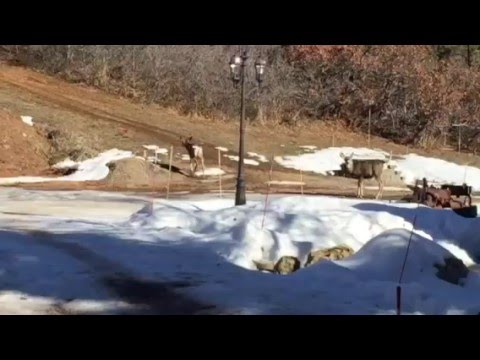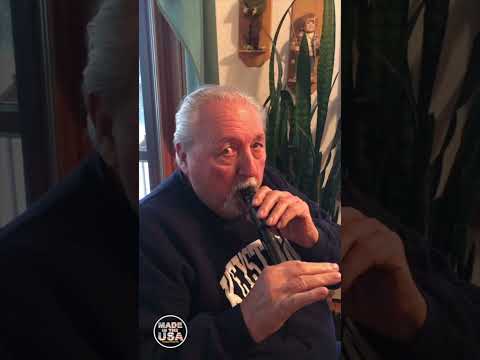
Contents
5 Things I Learned About Calling Deer from Expert Hunters
When it comes to calling deer, there are no magic tricks. Unsuccessful or uneventful calling is usually due to a lack of strategy. Hunters often call at random times in random conditions, hoping a buck will come into range. However, random tactics rarely work in the deer woods. Consistent success requires a strategic approach, but even that doesn’t guarantee anything.
I interviewed Zach Ferenbaugh, Dan Infalt, Will Primos, and Mark Drury to learn about their go-to deer calls, but I discovered even more about how they approach calling. They use a wide range of hunting tactics, from stalking deer in their beds on pressured public land to shooting bucks from elevated blinds on well-managed private properties. So regardless of where you hunt, their calling tips will be useful.
1. Your Setup Is Everything
Having the right wind doesn’t mean you’re in the clear on your setup. Whether you’re blind calling or grunting to a buck just out of range, he’ll usually try to circle downwind. To counter this, use terrain features like water bodies, steep bluffs, or banks to guide the deer in a certain direction. Deer, like humans, prefer the path of least resistance. By setting up correctly, you can push them into range.
If major terrain features are not available, use the wind and thermals to your advantage. This requires knowledge and strategy about the spot you’re hunting. For example, in ridge systems, a buck can easily circle to get downwind. However, shifting thermals can help in this case. With the right setup, they can divert your scent away from a buck’s path, making him think he has the wind advantage. Consider the prevailing wind, time of day, general bedding area, and buck travel routes to maximize your chances of fooling a buck’s nose.
2. Bucks Demand Realism
If you make a lot of noise setting up your climbing stand and expect a mature buck to come running to your grunts or rattles five minutes later, you’ll likely be disappointed.
Other hunters can easily pick apart your calling, and the deer are not convinced either. To be successful, create a realistic scenario, which is emphasized by all the experts I interviewed. Deer make a lot of noise when they’re doing deer things. Incorporating these natural noises into your calling sequences adds realism.
Hunting from the ground can provide the best opportunity to inject realism into your calls. When you rattle, don’t hesitate to thrash through the leaves or break branches. Watch a video of two bucks fighting if you’re unsure. There’s nothing quiet about it.

You can also add other elements of realism, such as imitating a deer making a scrape, as suggested by The Hunting Public’s Zach Ferenbaugh. The key is not to make random noise in the woods, but to sound like a deer. You want to pique a buck’s interest without putting him on high alert.
3. Learn Calls from Real Deer
Watching videos and how-tos about grunting and rattling can be helpful, but the best way to learn how to call is by listening to deer in the field. The experts I interviewed spend a significant amount of time in the woods each year. They all referred to numerous instances of deer making those same sounds and how they try to imitate them. Spend more time in your treestand or on the ground to enhance your understanding of calling and deer behavior.
4. Your Call Brand Doesn’t Matter
The brand of your deer call doesn’t determine its effectiveness. Most deer calls on the market are similar in function and sound. All the experts I spoke with use different calls. It’s more about how you use the call rather than which one you choose. Setting up correctly and adding realism are crucial for success. Whether you randomly select a grunt call from a sporting goods store or choose a specific brand, the outcome depends on your strategy and execution.
5. Call with Confidence
If you don’t believe in your calling, the deer won’t either. Hesitation can doom your calling from the start. Deer need convincing to come investigate your calls. Random or soft grunts are unlikely to be effective. On windy days, the deer might not even hear you. When you call, especially blind calling, commit to it. Confidence in your setup translates to confidence that deer are nearby or will eventually pass by. Call with the expectation that deer can hear you, and put effort and realism into your calls.
If you’re still searching for the ultimate deer call, good luck. Calling deer requires persistence and effort. However, there’s much to learn from hunters who consistently succeed in calling deer season after season. Incorporate these strategies into your calling when you’re in the stand next time, and who knows? You might surprise yourself—and the deer.
If you’re still searching for the ultimate deer call, good luck. Calling deer requires persistence and effort. However, there’s much to learn from hunters who consistently succeed in calling deer season after season. Incorporate these strategies into your calling when you’re in the stand next time, and who knows? You might surprise yourself—and the deer.

A skilled hunter, dedicated conservationist, and advocate for ethical practices. Respected in the hunting community, he balances human activity with environmental preservation.
